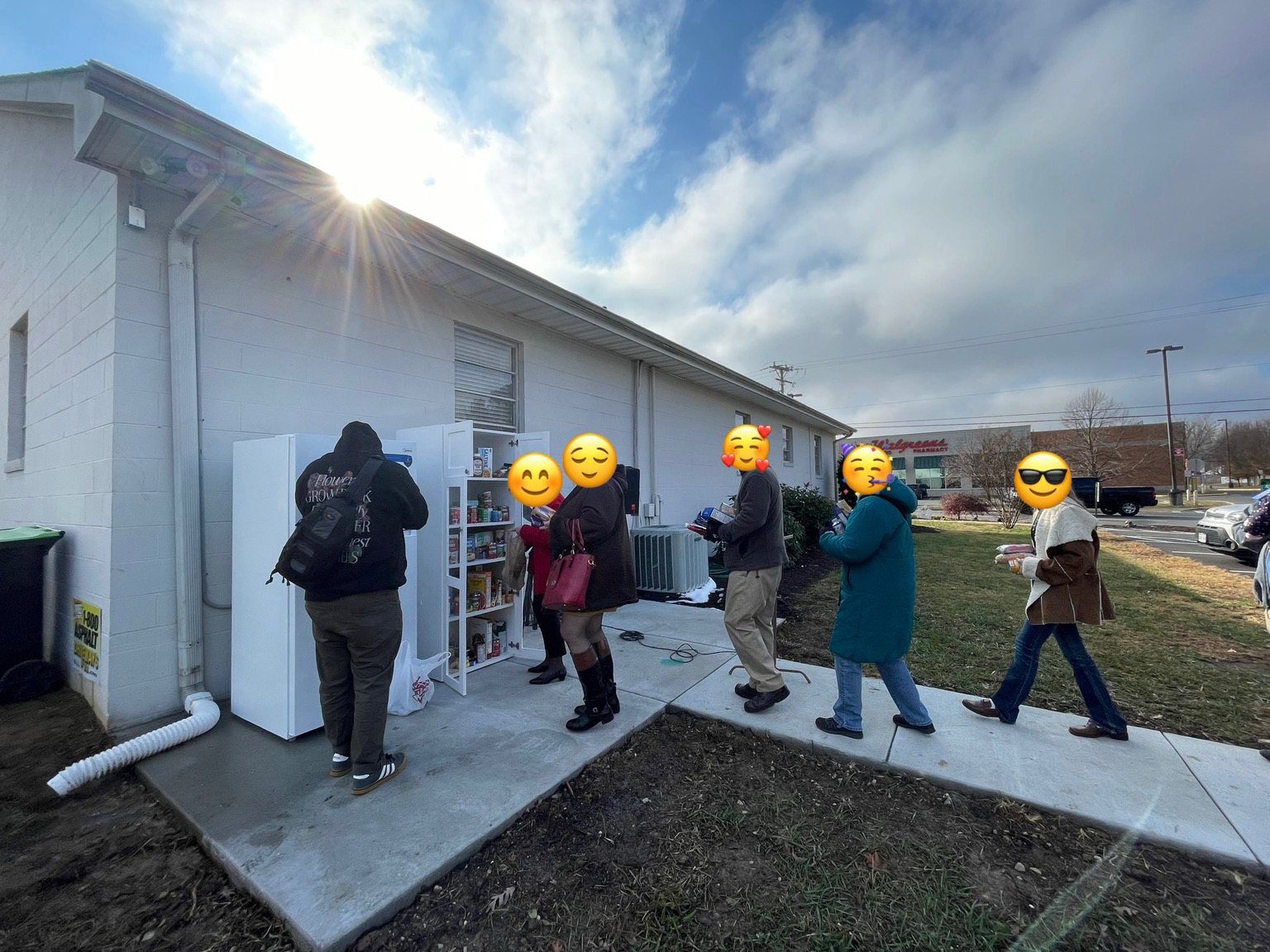⁂ Article
The Details of Our Escape Solarpunk FediRP
Still settling into my new instance, but I think I've got the perms and formatting working now. I'm running a play by post rp on Fedi, this long form post has the details (no pun intended).
⁂ Article
The Details of Our Escape Solarpunk FediRP
Still settling into my new instance, but I think I've got the perms and formatting working now. I'm running a play by post rp on Fedi, this long form post has the details (no pun intended).
⁂ Article
The Details of Our Escape Solarpunk FediRP
Still settling into my new instance, but I think I've got the perms and formatting working now. I'm running a play by post rp on Fedi, this long form post has the details (no pun intended).
The rooftop #Gardens at the #UniversityOfWarsaw is one of the most #SolarPunk things evah! Wow! 😍 🍃
FMI
https://en.uw.edu.pl/about-university/must-see-at-the-university/university-gardens/
https://kidsinthecity.pl/listing/the-warsaw-university-library-garden/
#SolarPunkSunday #LibraryGardens #LibrariesRule! #Poland #WarsawPoland
The rooftop #Gardens at the #UniversityOfWarsaw is one of the most #SolarPunk things evah! Wow! 😍 🍃
FMI
https://en.uw.edu.pl/about-university/must-see-at-the-university/university-gardens/
https://kidsinthecity.pl/listing/the-warsaw-university-library-garden/
#SolarPunkSunday #LibraryGardens #LibrariesRule! #Poland #WarsawPoland
Stolen from @futurebird - "To create utopias you must first imagine them."
(Drawing by Penpanoply)
Stolen from @futurebird - "To create utopias you must first imagine them."
(Drawing by Penpanoply)
#PuertoRicans are devising the #FoodSystem of tomorrow
by Ayurella Horn-Muller, September 3, 2025
Excerpt: "In the wake of #HurricaneMaria, many residents of #PuertoRico, especially those working to improve the archipelago’s local food system, began to think about hurricane preparedness differently. Because they weren’t able to rely on federal assistance, they decided to build their own prototypes of #resilience, which didn’t just set them up to be ready for the next storm, but also set them up to live better everyday lives. #Cooperatives, #gardens, and school-based agricultural programs emerged to fill the gaps left by the government. #Barter networks and local farmers markets have become increasingly popular. #MutualAid kitchens and community-led supermarkets have also expanded their work, ramping up donations, surplus food, and partnerships with nearby producers. These projects aren’t just temporary disaster responses. They are models of long-term resilience and food independence. They are living blueprints of what food sovereignty could look like in Puerto Rico — and elsewhere."
Read more:
https://www.yahoo.com/news/articles/puerto-ricans-devising-food-system-084500883.html
#SolarPunkSunday #ClimateChange #FoodInsecurity #Resiliency #BuildingCommunity #FoodSovereignty #ClimateResilience #SharingKnowledge #CircularEconomy #GrowYourOwn
#PuertoRicans are devising the #FoodSystem of tomorrow
by Ayurella Horn-Muller, September 3, 2025
Excerpt: "In the wake of #HurricaneMaria, many residents of #PuertoRico, especially those working to improve the archipelago’s local food system, began to think about hurricane preparedness differently. Because they weren’t able to rely on federal assistance, they decided to build their own prototypes of #resilience, which didn’t just set them up to be ready for the next storm, but also set them up to live better everyday lives. #Cooperatives, #gardens, and school-based agricultural programs emerged to fill the gaps left by the government. #Barter networks and local farmers markets have become increasingly popular. #MutualAid kitchens and community-led supermarkets have also expanded their work, ramping up donations, surplus food, and partnerships with nearby producers. These projects aren’t just temporary disaster responses. They are models of long-term resilience and food independence. They are living blueprints of what food sovereignty could look like in Puerto Rico — and elsewhere."
Read more:
https://www.yahoo.com/news/articles/puerto-ricans-devising-food-system-084500883.html
#SolarPunkSunday #ClimateChange #FoodInsecurity #Resiliency #BuildingCommunity #FoodSovereignty #ClimateResilience #SharingKnowledge #CircularEconomy #GrowYourOwn
Oh, one more SPS post (it's related to ones I posted earlier)... Note - be aware of pine moths and their larvae (read comments), and also I would use a knife to remove the pitch, and leave some behind on the "wound".
How to Make #PinePitchGlue
November 16, 2011
"Pine pitch glue is the Super Glue of wilderness survival. It can be used to help secure arrowheads, spear points, or knife blades, it can be used to water-proof the inside of a basket, it can be used to seal the seams of a bark container, or to water-proof the seams of a birch bark canoe.
Pine pitch glue is not hard to make because nature has already done most of the work for you. To make pine pitch glue you will need the following:
• some dried pine sap
• some softwood charcoal
• a round rock and a flat rock
• a campfire
• a pot or container to warm the pitch in
• a stick to stir the mixture
Just about any walk in the woods can provide you with #PineSap. Keep your eyes open for a pine tree that has had the bark damaged. When a pine tree is injured it oozes pine sap to seal the wound. This pine sap will dry into a hard, amber colored substance that can be easily picked off of the tree."
Learn more:
https://sensiblesurvival.blogspot.com/2011/11/how-to-make-pine-pitch-glue.html
#SolarPunkSunday #NaturalGlue #PinePitchGlue #SyntheticAlternatives #AlternativesToChemicals
We did it!!!
We built a new free fridge and community pantry!
It took about a hundred days from deciding to do it, through planning, and finally execution (thread above tracks this). And that is for putting down concrete and electrical. If we did a simple fridge on a pallet, it can be quicker. But even going all out, dang!
So we held the ribbon cutting ceremony. A lot of folks showed up to do the initial stock. Now we'll maintain it and spread the word out to the community. The town has a food resource app. The library maintains a list. I'll add it to our site. The local paper is writing an article.
This is also just the first part of this fridge. They're adding another pantry and an awning to cover it all.
Alright. This one is done. On to the next one!
#solarPunk #solarPunkSunday #freeFridge #foodSecurity #postScarcity #mutualAid
RE: https://infosec.exchange/@tinker/115679879698209429
This totally embodies the spirit of #SolarPunk!
We did it!!!
We built a new free fridge and community pantry!
It took about a hundred days from deciding to do it, through planning, and finally execution (thread above tracks this). And that is for putting down concrete and electrical. If we did a simple fridge on a pallet, it can be quicker. But even going all out, dang!
So we held the ribbon cutting ceremony. A lot of folks showed up to do the initial stock. Now we'll maintain it and spread the word out to the community. The town has a food resource app. The library maintains a list. I'll add it to our site. The local paper is writing an article.
This is also just the first part of this fridge. They're adding another pantry and an awning to cover it all.
Alright. This one is done. On to the next one!
#solarPunk #solarPunkSunday #freeFridge #foodSecurity #postScarcity #mutualAid




Oh, one more SPS post (it's related to ones I posted earlier)... Note - be aware of pine moths and their larvae (read comments), and also I would use a knife to remove the pitch, and leave some behind on the "wound".
How to Make #PinePitchGlue
November 16, 2011
"Pine pitch glue is the Super Glue of wilderness survival. It can be used to help secure arrowheads, spear points, or knife blades, it can be used to water-proof the inside of a basket, it can be used to seal the seams of a bark container, or to water-proof the seams of a birch bark canoe.
Pine pitch glue is not hard to make because nature has already done most of the work for you. To make pine pitch glue you will need the following:
• some dried pine sap
• some softwood charcoal
• a round rock and a flat rock
• a campfire
• a pot or container to warm the pitch in
• a stick to stir the mixture
Just about any walk in the woods can provide you with #PineSap. Keep your eyes open for a pine tree that has had the bark damaged. When a pine tree is injured it oozes pine sap to seal the wound. This pine sap will dry into a hard, amber colored substance that can be easily picked off of the tree."
Learn more:
https://sensiblesurvival.blogspot.com/2011/11/how-to-make-pine-pitch-glue.html
#SolarPunkSunday #NaturalGlue #PinePitchGlue #SyntheticAlternatives #AlternativesToChemicals
#SydneyNSW, #Australia - Why Buy When You Can Borrow?
"The #Sydney #LibraryOfThings is a not-for-profit service that provides the local community with access to a collection of extremely useful but only occasionally used items that can be loaned out for a short period of time.
We’re like a normal library but with things instead of books! Joining your enables you to borrow from ALL of our branches and you don’t have to live in the local area of the branch you want to join! Find out more about subscriptions and how it works here.
We hope that by encouraging people to borrow instead of buying or throwing away their unwanted items, together we can create a better connected, more sustainable and stronger community.
Did you know we also deliver #RepairCafes and run a #ToyLibrary? Check out #FixItHub Waverton, #TheFixery Cromer and The Lane Cove Toy Library.
We acknowledge the original custodians of the lands we work from, and pay respect to Elders past and present and all Aboriginal and Torres Strait Islander peoples."
FMI - https://thesydneylibraryofthings.org.au/
#SolarPunkSunday #BorrowDontBuy #FixIt #Australia #Decolonise #Degrowth #Decapitalise #LibraryOfThingsAustralia
I've been wanting to try doing #Furoshiki (but probably not this year). I've been putting aside pieces of cloth with interesting patterns for future cloth wrapping (and/or #VisibleMending .